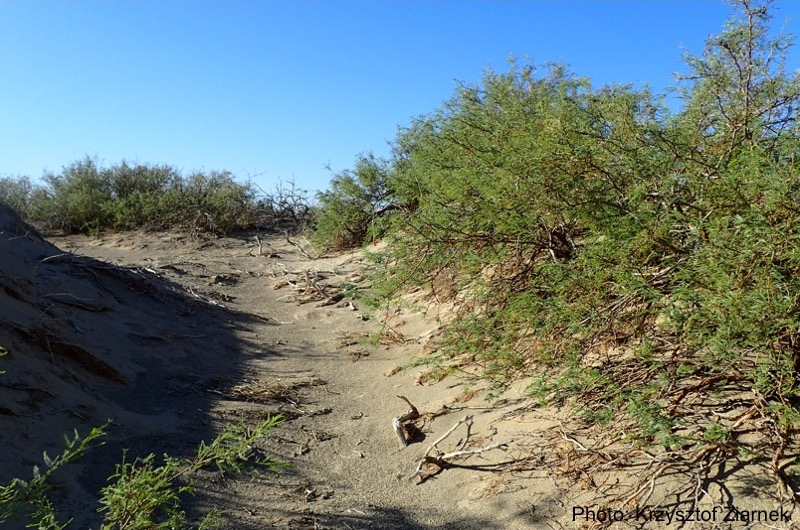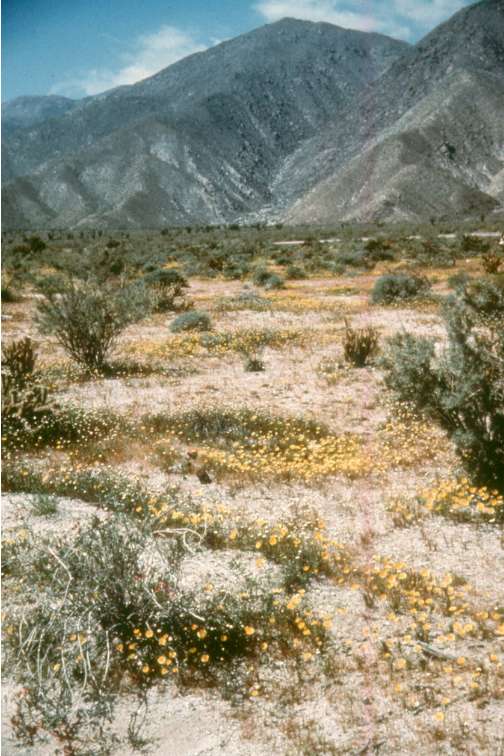Characteristics of Desert Plants
There are several ways that different desert plants deal with low water availability.
Deep-rooted plants
Some plants put down deep roots, reaching a supply of soil water that is more constantly available than surface soil water. These typically have small leaves, reducing transpirational water loss and keeping leaves from heating much above air temperature.

Succulent plants
Rather than tapping constant or perennial stores of soil water, some plants specialize in taking up water as quickly as possible after brief rains and storing that water in the plant's body for later use. These are succulent plants, like cacti. Brief rains may only wet a few cm of surface soil, and that water may evaporate from the soil surface in just a day or two. Some cacti produce "rain roots": ephemeral, shallow roots that are produced in response to rainfall and then die. The production of rain roots maximizes water capture from brief rains.

Even the giant saguaro cactus does not have deep roots. It's tap root goes down less than a meter, but it has an extensive network of very shallow roots.
Annual plants

Annual plants also take advantage of rainfall. These must grow and go to seed quickly, completing their life cycle before the soil dries out.